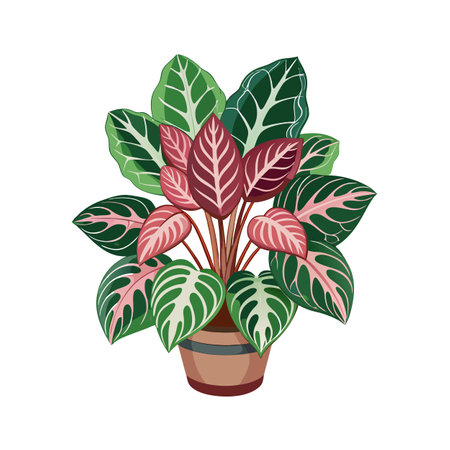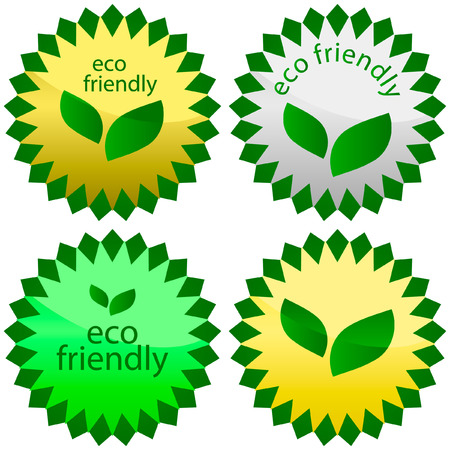Understanding Your Backyard Soil
If you’re planning to create your own DIY soil mixes for your backyard garden, the first step is getting to know what’s already in your ground. Every yard is different, and understanding your existing soil type helps you mix up the best blend for your favorite plants—whether you’re growing juicy tomatoes, vibrant flowers, or leafy greens. Let’s break down why it matters, how to test your soil, and what you can do with that knowledge.
Why Knowing Your Soil Type Matters
Your backyard soil is the foundation of everything you grow. Different plants like different types of soil, so figuring out what you have lets you adjust your DIY mix to fit each plant’s needs. For example, some veggies love loose, sandy soils that drain fast, while others thrive in rich, heavy clay that holds moisture.
How to Identify Your Soil Type
You don’t need fancy equipment to get a sense of what kind of soil is in your backyard. Here are a few easy ways to check:
| Soil Type | Feel Test | Water Test | Common Plants |
|---|---|---|---|
| Sandy | Gritty, falls apart easily | Drains quickly, water disappears fast | Carrots, lavender, succulents |
| Clay | Smooth, sticky when wet; forms a ball easily | Drains slowly, puddles form | Daylilies, asters, hostas |
| Silty | Soft, powdery; feels slippery when wet | Holds water but not as much as clay | Lettuce, ferns, willow trees |
| Loam (Ideal) | Mildly gritty and smooth; holds shape but crumbles easily | Balances drainage and moisture retention well | Tomatoes, roses, most veggies and flowers |
Testing Your Soil: Simple Steps at Home
- The Jar Test: Scoop up some soil from your yard, fill a glass jar about halfway with the soil, then add water almost to the top. Shake it hard and let it settle overnight. You’ll see layers: sand on the bottom, silt in the middle, clay on top. The thickness of each layer shows what type of soil dominates.
- The Squeeze Test: Grab a handful of moist (not soaking) soil and squeeze it. Sandy soil won’t hold together; clay will form a tight ball; loam will hold its shape but crumble easily.
- At-Home Kits: You can buy simple pH and nutrient testing kits at any garden center or big box store. These give a quick snapshot of your soil’s acidity (pH) and key nutrients like nitrogen and potassium.
What To Do With This Info?
Once you know your backyard’s basic soil type and pH level, you can start thinking about how to tweak it for each plant group. For example: add compost for more nutrients; mix in sand for better drainage; or toss in peat moss for improved moisture retention. All this knowledge means happier plants—and more homegrown success!
2. Essential Ingredients for a Healthy DIY Soil Mix
If you want your backyard plants to thrive, getting the soil right is half the battle. In American gardens, there are a few key ingredients that most successful DIY soil mixes have in common. Lets get to know these essentials and how they help your plants grow strong.
Understanding Common Soil Ingredients
Different plants need different things, but some basic components show up in almost every homemade soil mix. Here’s a handy table to break down what each ingredient does:
| Ingredient | What It Does | Notes for Backyard Use |
|---|---|---|
| Compost | Adds nutrients and improves soil structure | Use well-rotted compost from kitchen scraps or yard waste; avoid meat or dairy products |
| Peat Moss | Helps retain moisture and keeps soil loose | Popular in the U.S., but consider coco coir as an eco-friendly alternative |
| Perlite | Aerates soil and improves drainage | Lightweight white pellets; great for veggies and flowers needing well-drained roots |
| Vermiculite | Holds moisture and nutrients in the soil | Perfect for seed starting mixes and water-loving plants like ferns or hostas |
| Lime or Sulfur (Natural Amendments) | Adjusts pH levels for specific plant needs | Lime raises pH (less acidic), sulfur lowers it (more acidic); test your soil before adding! |
| Worm Castings or Manure | Packs a nutrient punch for hungry plants | Add sparingly—too much can burn tender roots; aged manure is safest for veggies |
| Pine Bark Fines or Wood Chips | Adds structure and slow-release nutrients as they break down | Best for shrubs, perennials, and native American woodland plants like blueberries or azaleas |
The Role of Each Ingredient in Your Garden Mixes
Compost: Think of this as the backbone of most mixes—its full of life and helps everything grow better.
Peat Moss/Coco Coir: These keep your mix fluffy so roots can breathe, but also hold onto moisture so you don’t have to water all the time.
Perlite & Vermiculite: They look similar but work a little differently. Perlite is best when you want fast drainage, while vermiculite hangs onto water longer.
Lime/Sulfur: Some American favorites—like hydrangeas or blueberries—are picky about their soil pH. A quick test kit from your local hardware store will help you dial it in just right.
Worm Castings/Manure: Great for giving tomatoes, peppers, and other heavy feeders a boost.
Pine Bark Fines: If you’ve got acid-loving plants or want to mimic a forest floor feel, this is your go-to.
A Few Tips from American Backyard Gardeners:
- If youre using local compost or manure, let it age well to avoid weed seeds or too much ammonia.
- Coco coir is popular with gardeners looking to reduce peat usage—it comes from coconut husks and is super renewable.
- Tweak your mix depending on what you’re growing—succulents love more perlite, while lettuce prefers richer compost.
- Your local extension office can help with free or cheap soil testing if youre not sure about your gardens needs.

3. Custom Mixes for Popular Plant Types
Why Make Your Own Soil Mix?
Mixing your own soil at home lets you adjust ingredients based on what your backyard plants really need. Its affordable, easy, and ensures your veggies, flowers, herbs, or native plants get the best possible start. Here are simple recipes tailored to some of the most popular plant types found in American gardens.
Soil Mix Recipes for Different Backyard Plants
| Plant Type | DIY Soil Mix Recipe | Pro Tip |
|---|---|---|
| Vegetables | 1 part compost 1 part peat moss or coconut coir 1 part perlite or coarse sand |
Add a sprinkle of organic vegetable fertilizer before planting. |
| Flowers (Annuals & Perennials) | 2 parts garden soil 1 part compost 1 part perlite |
For flowering power, mix in a handful of bone meal. |
| Herbs | 1 part potting soil 1 part coarse sand ½ part compost |
Most herbs like well-drained soil—don’t overwater! |
| Native Plants | 2 parts local topsoil 1 part leaf mold or compost (Optional: ½ part sand for extra drainage) |
Mimic your region’s natural soil for happy natives. |
Troubleshooting Tips for DIY Soil Mixing
- If your mix stays soggy, add more perlite or coarse sand.
- If it dries out too fast, blend in extra compost or peat moss.
- Avoid using soil straight from the yard for containers—it can compact and harm roots.
Mixing & Storing Your Soil Blends
You can use a wheelbarrow, large tub, or even an old kiddie pool to blend your ingredients. Store extra soil in a covered bin to keep it fresh and free from pests until you’re ready to plant. With these simple mixes, you’ll give every plant in your backyard its own “homegrown” head start!
Moisture Management and Soil Drainage
Getting the moisture just right in your DIY soil mix is a game changer, especially if you’re growing a variety of plants in different climates across the US. Some regions are hot and dry, while others get a lot of rain—so it’s important to adjust your blends to keep your plants’ roots happy and healthy. Here’s how you can balance drainage and moisture retention at home:
Why Moisture Balance Matters
Roots need air as much as they need water. If the soil holds too much moisture, roots may rot. Too little, and your plants will dry out. The goal is to create a blend that drains well but also holds onto enough moisture for your specific plant needs.
Quick Reference: Common Soil Amendments
| Amendment | Improves Drainage | Holds Moisture | Best For |
|---|---|---|---|
| Perlite | Yes | No | Cacti, succulents, herbs |
| Vermiculite | No | Yes | Seed starting, ferns, veggies |
| Coconut coir | Somewhat | Yes | General use, raised beds |
| Pine bark fines | Yes | No | Trees, shrubs, blueberries |
| Compost/peat moss | No (can compact) | Yes (peat); Compost varies | Flower beds, vegetables, lawns |
| Sand (coarse) | Yes (if coarse) | No | Lawn leveling, root crops |
Tips and Tricks for Perfect Drainage and Moisture Control
Add the Right Amendment for Your Climate Zone
- Drier Regions (Southwest, parts of California): Add more coconut coir or vermiculite to help retain moisture.
- Rainy or Humid Areas (Pacific Northwest, Southeast): Bump up the perlite or coarse sand to improve drainage and prevent soggy roots.
Create Layers When Needed
If you’re planting in pots or raised beds prone to holding too much water, add a bottom layer of gravel or broken terra cotta pots before adding your custom blend. This helps extra water escape quickly.
The “Squeeze Test” for Soil Mixes:
- Scoop up a handful of your mixed soil and squeeze it.
- If it forms a ball but crumbles when poked—perfect!
- If it stays clumped and soggy—add more drainage material like perlite or bark fines.
- If it falls apart instantly—mix in some compost or coconut coir for better moisture holding.
Troubleshooting Common Issues Across the US:
- Soggy Soil? Add extra perlite or pine bark fines. Avoid fine sand—it can actually make clay soils worse!
- Dried Out Fast? Increase organic matter with compost or coconut coir. Mulching after planting also helps lock in moisture.
Your backyard’s needs might be different from your neighbor’s—even across town! Don’t be afraid to experiment with small batches until you find what works best for your garden’s climate and plant list.
5. Sustainability and Organic Options
When you’re mixing up your own DIY soil blends, it’s not just about what helps your plants grow best—it’s also about making choices that are good for the planet, your family, and the critters that share your backyard. Using eco-friendly and organic amendments keeps your soil healthy, supports local wildlife, and makes sure your garden is a safe place for kids and pets to play.
Why Choose Sustainable and Organic Ingredients?
Sustainable gardening means using resources wisely—choosing materials that are renewable, locally sourced when possible, and low-impact on the environment. Organic amendments feed the soil naturally, without harsh chemicals that can harm beneficial bugs or leach into groundwater.
Common Organic Soil Amendments
| Amendment | Main Benefit | Kid/Pet Friendly? | Eco-Friendly Tip |
|---|---|---|---|
| Compost | Adds nutrients, improves texture | Yes | Make your own from kitchen scraps |
| Coconut coir | Boosts moisture retention | Yes | Choose fair-trade, avoid peat moss |
| Worm castings | Nutrient-rich, boosts microbes | Yes | Source from local worm farms if possible |
| Pine bark fines | Aerates soil, slow-release nutrients | Yes | Select bark from sustainable forestry practices |
| Leaf mold | Improves structure & water holding | Yes | Create from raked leaves in your yard |
| Kelp meal | Adds micronutrients & growth hormones | Yes (in moderation) | Look for responsibly harvested sources only |
| Alfalfa meal/pellets | Nitrogen boost, feeds microbes | Yes (avoid overuse) | Buy organic alfalfa to avoid pesticides |
| BIOCHAR (charred wood) | Lifts soil fertility & carbon sequestration | Yes (pure form) | Use biochar made from clean wood waste only |
Sourcing Responsibly—What to Look For?
- Local first: Whenever possible, choose soil ingredients from local suppliers or even your own backyard. This cuts down on transportation emissions and supports your community.
- Avoid peat moss: Peat harvesting destroys wetlands—coconut coir or leaf mold are better alternatives.
- No chemical additives: Read labels and go for products labeled “organic” or “OMRI Listed” (approved for organic gardening).
Tips for Safe & Green Gardening at Home:
- Create a compost pile or bin: This turns food scraps and yard waste into rich garden gold while reducing landfill trash.
- Treat water as precious: Mix in amendments like compost and coconut coir to help soil hold moisture longer—less watering needed!
- Add mulch: Top dress beds with shredded leaves or pine bark to keep weeds down and moisture in.
Your backyard can be a haven—for you, your kids, furry friends, birds, bees, and butterflies. By choosing sustainable and organic soil mix options, you’re helping everyone thrive!
6. Storing and Reusing Your Soil Mixes
After mixing up the perfect DIY soil blends for your backyard plants, it’s common to have some leftovers. Properly storing these mixes and knowing how to refresh used soil can save you money and effort for next season’s planting. Here’s how you can keep your custom soil mixes fresh and ready to use.
How to Store Leftover Soil Mixes
Moisture, pests, and contamination are the biggest threats to unused soil. Keeping your blends in good shape is simple with a few practical steps:
| Step | Why It Matters | How-To |
|---|---|---|
| Airtight Storage | Keeps out pests & moisture | Use heavy-duty plastic bins or sealed buckets with tight lids |
| Labeling | Avoids mix-ups later | Mark each container with the type of mix and date made |
| Dry Location | Prevents mold growth | Store containers in a shed, garage, or covered porch off the ground |
| Pest Control | Keeps bugs away | Add a sprinkle of diatomaceous earth on top before sealing if needed |
Rejuvenating Used Soil Mixes for Next Season
If you’ve already used your DIY blend for a round of veggies or flowers, don’t toss it! With some simple steps, you can refresh that mix for another season. Here’s what to do:
- Sift Out Old Roots & Debris: Remove plant remains by hand or with a garden sieve.
- Add Organic Matter: Mix in compost, worm castings, or aged manure to restore nutrients.
- Check Drainage: If the soil feels compacted, add some fresh perlite or coarse sand.
- Balance pH: Test with a home kit; adjust using lime (to raise) or sulfur (to lower) as needed.
- Let It Rest: Allow the refreshed soil to sit covered for at least 1-2 weeks before replanting.
Quick Reference: Refreshing Used Soil Table
| What To Add? | Main Benefit | How Much? |
|---|---|---|
| Compost/Worm Castings | Nutrient boost & structure improvement | About 1/4 to 1/3 of total volume mixed in well |
| Perlite/Sand | Improves drainage & aeration | Up to 10% of total volume as needed |
| Lime/Sulfur (if needed) | Puts pH back in balance for specific plants | Follow package instructions based on test results |
Troubleshooting Tips:
- If soil smells sour or rotten, spread it out thinly under sun for a day or two before reuse.
- If bugs appear, solarize by placing in clear plastic bags under direct sun for a week.
- Avoid reusing soil from diseased plants—compost it separately or discard safely.
7. Troubleshooting Common DIY Soil Mistakes
Even the most dedicated backyard gardeners run into a few bumps when mixing their own soil blends. If your homemade soil isn’t working out like you hoped, don’t worry—most issues have simple fixes! Here’s how to spot and solve common problems so your veggies, flowers, and shrubs can thrive.
Compacted or Heavy Soil Mixes
If your DIY mix feels dense or water pools on top instead of soaking in, compaction could be the culprit. This usually happens when there’s too much clay or not enough aeration.
Quick Fixes for Compacted Soil
| Issue | Why It Happens | How to Fix It |
|---|---|---|
| Soggy or dense soil | Too much clay or peat, not enough drainage material | Add perlite, coarse sand, or pine bark fines; gently turn soil with a garden fork to fluff it up |
| Poor root growth | Lack of air pockets for roots to breathe | Mix in more organic matter like compost or coconut coir; avoid walking on garden beds to prevent further compaction |
Poor Germination or Stunted Seedlings
If seeds aren’t sprouting well, or young plants seem stuck at the starting line, your blend might be too rich, salty, or lacking in nutrients.
Easy Solutions for Germination Issues
| Problem | Possible Cause | What To Do |
|---|---|---|
| No seed sprouting | Soil too wet/dry, too rich in fertilizer, or old seeds | Check moisture daily (soil should be moist but not soggy), use a lighter seed-starting mix with less compost/manure, and always plant fresh seeds if possible |
| Leggy seedlings (tall & weak) | Poor light or overly rich nitrogen content in mix | Move trays to brighter spot; cut back on high-nitrogen additives like blood meal during early growth stages |
| Pale leaves/yellowing starts | Nutrient imbalance or pH off-balance (too acidic/alkaline) | Add a balanced organic fertilizer according to package directions; test pH and adjust with lime (to raise) or sulfur (to lower) as needed |
Nutrient Deficiencies and Imbalances
If established plants show signs of struggle—like yellow leaves, slow growth, or poor flowering—your custom mix might need a nutrient boost.
Troubleshooting Nutrient Problems in DIY Soils
| Symptom | Likely Deficiency | Quick Solution |
|---|---|---|
| Pale leaves/yellowing between veins (older leaves first) | Nitrogen deficiency | Add blood meal, fish emulsion, or composted manure around plants and water in well |
| Purple/reddish leaf edges (especially on tomatoes) | Phosphorus deficiency | Add bone meal or rock phosphate following label instructions; keep soil slightly warm for better uptake early in season |
| Curling leaves/brown tips (newer leaves) | Potassium deficiency or salt buildup from over-fertilizing | Add wood ash sparingly for potassium; flush soil with water to remove excess salts if needed |
| Blossom end rot on tomatoes/peppers/squash | Calcium deficiency (often from inconsistent watering) | Add agricultural lime or crushed eggshells to soil; water evenly and deeply each week rather than shallow frequent watering |
General Tips for Healthy DIY Soils All Season Long
- Avoid using yard soil unless you’ve tested it for contaminants and texture—stick with bagged amendments and proven recipes for best results.
- Tweak your mixes throughout the season as you observe plant health: sometimes a small adjustment is all that’s needed!
- If in doubt, local cooperative extension offices are a goldmine for soil troubleshooting advice specific to your region.
- Keep experimenting—every backyard is unique, and homemade blends let you find what works best for your own patch of earth.


